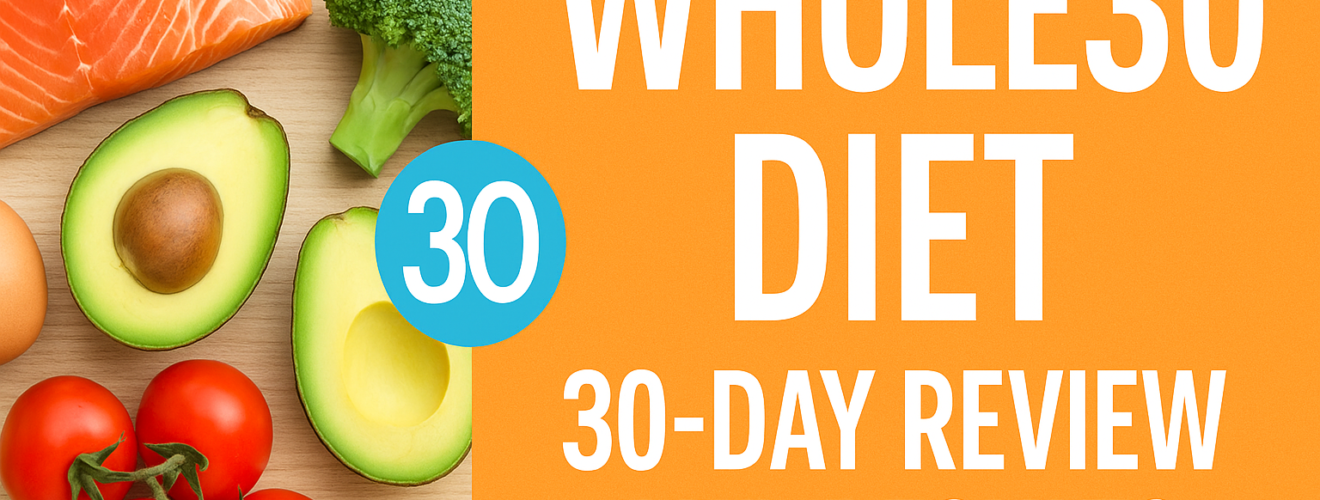Whole30 Diet: 30-Day Review and Results

In a world brimming with quick fixes and fad diets, the Whole30 program offers a unique approach to health and nutrition. Designed as a 30-day reset, this diet promises to eliminate inflammation, improve energy levels, and transform one’s relationship with food. I committed to the Whole30 diet for an entire month, followed its rules with discipline, and carefully observed the effects it had on my body and mind. This article details my experience, the challenges I faced, what I ate, and the physical and mental changes I noticed by the end of the program.
What Is the Whole30 Diet?
The Whole30 diet eliminates processed foods, sugar, dairy, grains, legumes, alcohol, and certain additives for 30 days. Unlike calorie-restricted diets, Whole30 focuses on food quality over quantity. The goal is to identify foods that may cause inflammation, bloating, fatigue, or other issues by removing them and later reintroducing them systematically.
Created by Melissa Hartwig Urban in 2009, Whole30 focuses on whole, unprocessed foods. It includes vegetables, fruits, unprocessed meats, seafood, eggs, nuts (except peanuts), and healthy fats. The diet bans scales or progress tracking during the 30 days, encouraging a shift in mindset away from numbers and toward well-being.
Week 1: The Detox and the Headaches
I entered the first week with excitement. My pantry contained only Whole30-approved items, and I spent Sunday meal-prepping grilled chicken, roasted vegetables, hard-boiled eggs, and homemade salad dressings.
However, my body reacted quickly to the sudden sugar withdrawal. I developed headaches by Day 2, and a persistent feeling of fatigue followed. My energy dipped, and I felt irritable, especially in the late afternoons. Cravings hit hard around 9 PM. Chocolate, bread, and cheese filled my dreams.
Despite this, I stuck with it. I cooked every meal and carried snacks like almonds and carrots to avoid temptation. Water intake increased naturally because my body craved hydration more than usual. By the end of the week, the headaches faded slightly, and I started to feel lighter.
Week 2: Settling In and Gaining Clarity
By Day 9, I noticed a significant change in mental clarity. My mornings began without grogginess, and I managed meetings with sharper focus. The food routine became easier. I no longer checked labels obsessively, and cooking felt like a meditative ritual.
Breakfast consisted of scrambled eggs with sautéed spinach and sweet potatoes. Lunch included grilled chicken, avocado, and a fresh salad. Dinner rotated between fish with asparagus, beef stir-fry (without soy sauce), and cauliflower rice. I snacked less because the meals kept me full longer.
Socializing presented challenges. Friends invited me to dinners and parties, and I declined several offers. I felt slightly isolated but reminded myself of the goal. When I joined one evening out, I ordered a sparkling water with lime and ate beforehand. I avoided temptation and still enjoyed the company.
Week 3: Energy Boost and Emotional Wins
By Day 16, I woke up energized and eager to start the day. I no longer required coffee to function. Afternoon slumps disappeared. My skin cleared up. Bloating vanished, and my clothes fit better.
Emotionally, I noticed subtle victories. Food no longer controlled me. I cooked more creatively, tried zucchini noodles, baked sweet potato fries, and used coconut aminos in stir-fries. I stayed engaged with my body’s needs. I ate slowly, drank water mindfully, and honored my hunger cues.
My workouts improved. I lifted heavier weights and maintained better stamina during cardio sessions. I recovered faster after intense training days.
By the end of the third week, cravings subsided dramatically. The sight of pastries and chips no longer stirred desire. I felt proud and mentally strong.
Week 4: Mastery, Reflection, and Preparation for Reintroduction
The final stretch felt smooth. I navigated grocery shopping and meal planning with ease. New dishes appeared in my kitchen—like salmon with mango salsa, ground lamb with roasted beets, and cauliflower mash with garlic shrimp.
Friends noticed a glow on my face. My posture improved. I smiled more. Sleep became deeper and more restful. I woke up without alarms. My digestion worked like clockwork.
I spent the last few days reflecting. I journaled about the emotional habits I had overcome—mindless snacking, late-night sugar cravings, stress eating. I replaced them with walking, herbal tea, and deep breathing.
Results After 30 Days
After completing the Whole30, I felt stronger, lighter, and mentally sharper. Although I avoided the scale during the month, I weighed myself on Day 31. I had lost 4.8 kilograms (about 10.5 pounds). My waist measurement dropped by 3.5 inches. I slept 1–2 hours more each night and felt more productive during the day.
More importantly, I reset my emotional relationship with food. I no longer ate from boredom or anxiety. I viewed food as nourishment and fuel, not as a reward or escape.
Reintroduction Phase
Whole30 doesn’t end on Day 30. The next 10 days require careful reintroduction of eliminated food groups, one at a time. I followed this protocol methodically.
- Day 31: I reintroduced dairy. Cheese and yogurt returned, but I noticed slight bloating and fatigue.
- Day 33: I tested gluten grains. Whole wheat bread caused no symptoms, but pasta made me feel sluggish.
- Day 36: I reintroduced legumes. Chickpeas caused bloating, but peanut butter had no effect.
- Day 39: I added alcohol. A glass of wine triggered a headache and sleep disruption.
Through this reintroduction, I identified foods that didn’t agree with my system. I adjusted my long-term diet accordingly—keeping dairy and legumes limited, minimizing alcohol, and choosing whole grains mindfully.
Challenges I Faced
Whole30 requires strict planning. I couldn’t grab a sandwich or snack on packaged items. Social events proved tricky. Dining out meant asking a lot of questions. Some days I felt fatigued, especially in the beginning. Variety felt limited without sauces, bread, or grains. But I adapted and learned to enjoy simplicity.
Final Thoughts
The Whole30 diet pushed me to reevaluate my choices and confront emotional eating habits I didn’t realize I had. I gained control over cravings, improved my sleep, felt more energetic, and lost weight without counting calories or skipping meals. This program demands discipline, but the rewards stretch far beyond physical results.
Whole30 won’t suit everyone. It works best as a reset, not a permanent lifestyle. However, anyone seeking a clearer mind, healthier habits, and a deeper understanding of their body can benefit from this 30-day experience.
My journey with Whole30 changed how I view food forever. It taught me the value of clean, intentional eating—and gave me the clarity to choose what truly nourishes me.













